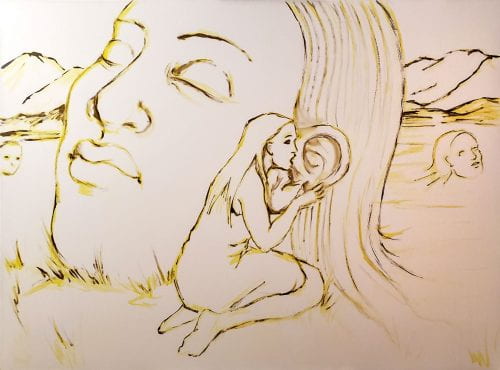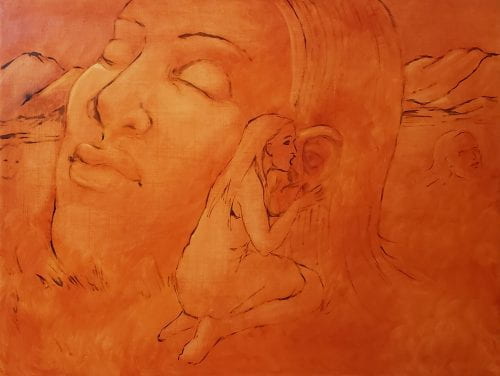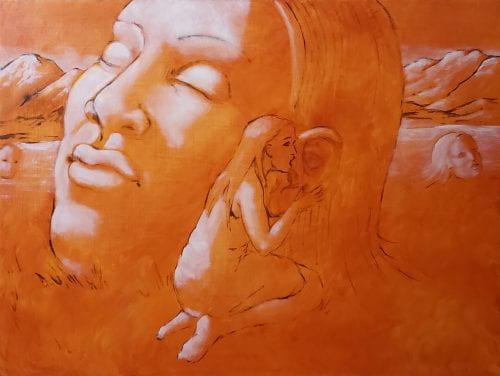My preferred method of working starts with a canvas, usually cotton, which I have built the frame, stretched, and applied gesso until I have a fairly smooth surface.
At this point, I just want to rough in the relationships and make sure the composition holds together when going from the fairly small graphite sketch to a fairly large canvas.
 Step 2: Establishing the Under Painting
Step 2: Establishing the Under Painting
I use a thinned raw or burnt umber (in this case, raw) to strengthen the lines, work out any proportion issues, or compositional issues. Once this is dry, a wash of burnt sienna is applied to establish the medium tone.
 Step 3: Toning with Burnt Sienna
Step 3: Toning with Burnt Sienna
Overall toning of the canvas with a layer of burnt sienna. I really like how this layer interacts with subsequent layers when working through warm/cool relationships. I continue to refine and make changes in this layer as well as establishing where the lights and darks will be.

Step 4: Re-establishing Light Masses
At this stage, because I want to keep my light masses luminescent throughout the rest of the painting process, I re-establish them, sometimes heavily, throughout the painting. This stage also allows me to start considering creating depth through value and chroma.

